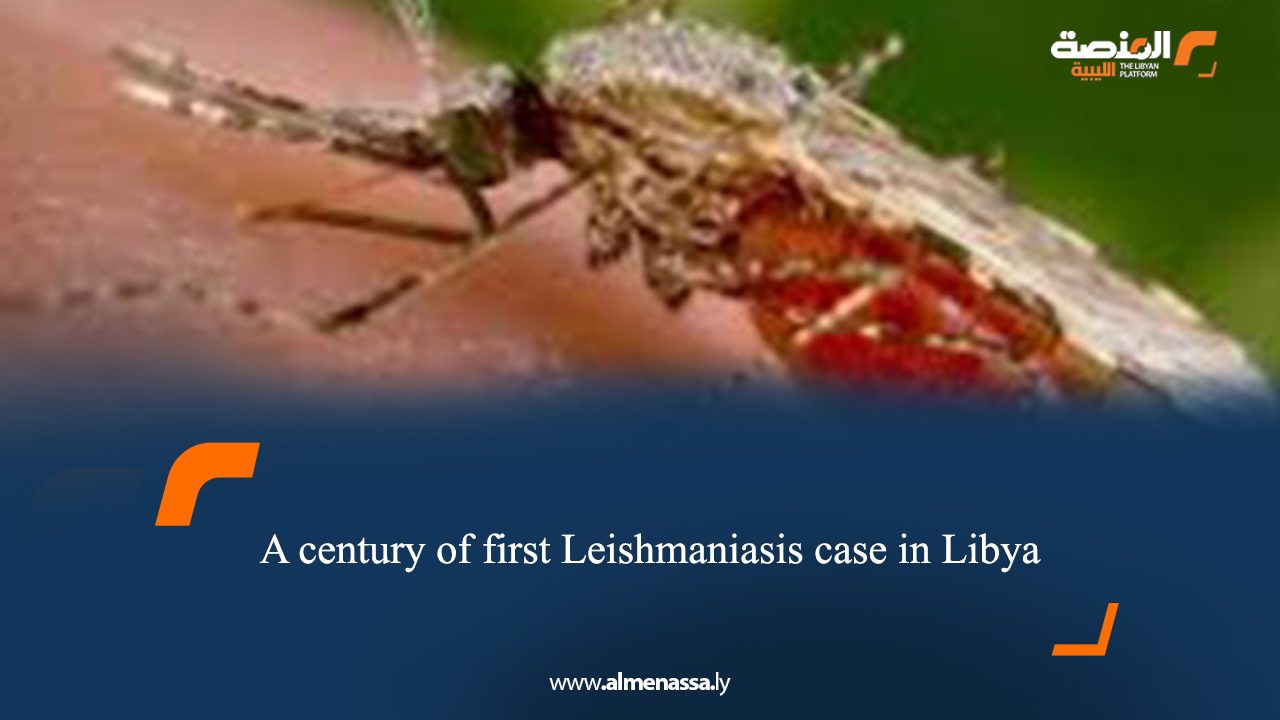A full century has passed since the first recorded case of Leishmaniasis in Libya, yet the descendants of those early sufferers continue to grapple with the enduring presence of this endemic disease across disparate regions of the country. Despite persistent efforts to combat it, the scale of its spread and the depth of suffering it inflicts appear to dwarf the impact of current interventions, leaving communities vulnerable to a relentless health crisis.
Troubling Figures
Dr. Fathi al-Kasih, head of the dermatology department at Ben Sina Educational Hospital in Sirte and the point person for the Leishmaniasis control programme in the central region, revealed the detection of 38 new cases in the areas of Al-Washka, Abu Qurain, Sirte, and the Gulf of Sidra in the first three months of this year alone.
Speaking to the press, Dr. al-Kasih detailed the geographical distribution of these cases: 15 in the Al-Washka area, including seven affecting Egyptian and African residents; ten cases in Abu Qurain; and eight in the Zamzam region. Furthermore, the dermatology clinic at Ben Sina Educational Hospital in Sirte itself received five new patients afflicted by the disease during the same period.
Dr. al-Kasih noted that those currently suffering from Leishmaniasis are receiving the necessary treatment with Pentostam injections, recently supplied by the National Centre for Disease Control. He attributed the persistent spread of the disease to a critical failure in controlling its primary reservoir and vector: the sandfly
.
The Sandfly: Primary Carrier and Neglected Target
Dr. al-Kasih emphatically stressed that the widespread outbreak and continued transmission of the disease are directly linked to the lack of effective measures against the parasite’s primary vector, the sandfly. He underscored the urgent need for intensive insecticide spraying campaigns in endemic areas to eradicate this transmitting insect. Additionally, he highlighted the importance of controlling rodents and stray dogs, which play a role in the parasite’s life cycle and contribute to its spread among the human population.
Furthermore, Dr. al-Kasih emphasised the importance of implementing comprehensive environmental reform measures, such as the regular tilling of land in rural areas and monitoring and safe disposal of abandoned houses that can harbour disease vectors. These measures, he argued, are crucial in effectively curbing the spread of infection and containing the disease.
Thousands Afflicted in Previous Years
Reports indicate that in 2019 alone, at least five thousand cases of Leishmaniasis were recorded in Libya within a mere six-month period, with the majority of these concentrated in the areas between the cities of Misrata and Tawergha. Worryingly, other reports have suggested that the actual number of infections could be significantly higher, due to a considerable number of cases going officially unregistered, either because those affected are reluctant to seek treatment or fear the social stigma associated with the disease.
Environmental Health: A History of Outbreaks and Recurrence
For its part, the Environmental Health Affairs Directorate in southern Tripoli confirmed that Libya has a long and troubled history with Leishmaniasis, with the first cases documented a century ago. The country experienced its first large-scale outbreak in the 1980s in the Bani Walid region. Another significant surge in cases was recorded in 2006, and the disease resurfaced forcefully in 2019 in the city of Tawergha.
According to information from the Environmental Health Affairs Directorate in southern Tripoli, the disease re-emerged in 2020 in the Bani Walid area and then witnessed a widespread proliferation and spread in late 2023 across numerous regions of Libya, including Yefren, Al-Heera, Tarhuna, Al-Khoms, Kikla, Zliten, and other open and mountainous areas, indicating a concerning geographical expansion of the disease’s reach.
The Transmission Cycle: A Dangerous Trio
The Leishmania parasite is transmitted to humans through the painful bite of an infected female sandfly. The fly acquires the infection by feeding on the blood of an infected mammal, thus forming a dangerous “transmission triangle” in nature: the infected mammal (the reservoir), the sandfly (the vector), and the newly infected human. Crucially, the infection is not directly transmitted from one human to another.
Sandflies thrive in most regions with suitable climatic conditions for their breeding, and they closely resemble small mosquitoes, typically ranging in size from just 1 to 3 millimetres. Their bite usually causes a minor skin reaction similar to that of a common mosquito, which can unfortunately lead to delays in the diagnosis of Leishmaniasis.
Symptoms and Potential Complications
The symptoms of Leishmaniasis primarily depend on the location of the skin lesions. These can include difficulty breathing in rare cases, and the appearance of skin ulcers that can develop into chronic, slow-healing sores that leave permanent scars. In other instances, symptoms may involve nasal congestion, chronic runny nose, recurrent nosebleeds, difficulty swallowing, and the development of ulcers and erosion in the mouth, tongue, gums, lips, and inner nose. The most serious complications of Leishmaniasis include severe bleeding, the development of life-threatening infections due to immune system damage, and the risk of permanent facial disfigurement, particularly in advanced cases.
Conclusion: Leishmaniasis – An Enduring Health Challenge Demanding Concerted Action The escalating numbers of Leishmaniasis cases in Libya underscore the persistent challenge this disease poses to the country’s health sector. Addressing this challenge effectively requires a concerted and collaborative effort from all relevant authorities to eradicate the disease’s vectors, reduce infection rates swiftly and effectively, and ensure that all those affected receive the necessary treatment as quickly as possible before they succumb to potentially life-threatening health complications


